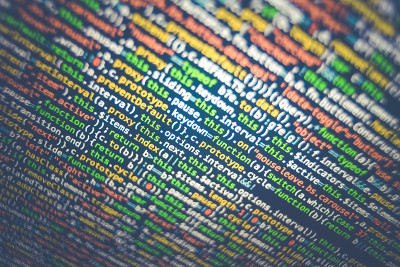-
Regulatory and resource agencies sometimes require collection of benthic macroinvertebrates and/or fish for baseline data or permit compliance. It is too common for them to not know what they will do with the data. Correctly analyzing and interpreting these data yields valuable information that operators and regulators can use to make well-informed decisions regarding Clean Water Act compliance. Aquatic biotic communities reflect ambient water quality conditions much better than do chemical concentrations.
-
Beneficial uses under the clean water act
Categories: Estimated reading time: 3 minutes
The Clean Water Act’s (CWA) Section 301(m)(2) reads: “The effuuent limitations established under a permit issued under paragraph (1) shall be sufficient to implement the applicable State water quality standards, to assure the protection of public water supplies and protection and propagation of a balanced, indigenous population of shellfish, fish, fauna, wildlife, and other aquatic organisms, and to allow recreational activities in and on the water. In setting such limitations, the Administrator shall take into account any seasonal variations and the need for an adequate margin of safety, considering the lack of essential knowledge concerning the relationship between effuuent limitations and water quality and the lack of essential knowledge of the effects of discharges on beneficial uses of the receiving waters. -
Natural resource operators are directly affected by habitat preservation requirements for species listed under the ESA and state equivalents. One possible explanation is that environmental decision-makers do not have sufficient information, ecological training, or appropriate analytical tools so they fall back on the precautionary principle (hope for the best, prepare for the worst) and declare that all actual and potential habitat for the species be left untouched for population sustainability. This is both unnecessary and wasteful as there are robust statistical and spatio-temporal models that can inform technically sound and legally defensible decisions, even with limited data.
-
Sage-grouse, salmon, desert tortoise, and many other animals are listed under the Endangered Species Act (ESA) or are being considered for listing. Much data have been collected on population abundance, distribution, and habitat quantity and quality. Unfortunately, most biotic data are incorrectly analyzed because count data differ from continuous data and require different statistical models. Because ineffective policy decisions result from inappropriate models correct analytical results are critical for regulated industries, regulators, and other stakeholders.
-
From baseline conditions for environmental impact assessments to compliance with regulatory permit conditions regulated companies collect biological data and report analytical results to regulators and other interested parties. Historically, analyses used biotic diversity and integrity indices. These attempt to summarize highly complex natural ecosystems in a single number believed to make comparisons and decisions easier. While these indices are based on ecological theory they are very difficult, even impossible, to measure and quantitatively compare.
-
Many common threads connect geographically separate regulatory and public concerns. Oregon has peak and ecological flows for water storage projects, Nevada has water quality draining from waste rock disposal areas (RDAs), West Virginia (and other Appalachian coal mining areas) has downstream water quality and aquatic biota from valley fill runoff. Related concerns involve fish and the Endangered Species Act (ESA): bull trout in Idaho; salmon in Oregon and Washington; Lahontan cutthroat trout in Nevada.
-
Environmental Issues Involving Fish and Wildlife
Categories: Estimated reading time: 2 minutes
There are many plant and animal species considered to be threatened, endangered, or of special concern to regulators and the public. Correctly estimating population sizes, relationship to habitats, and potential effects of industrial activities is crucial to many permit issues and lawsuits. Other environmental issues are more broad, such as quantifying relationships of industrial activities and natural ecosystems. The most effective approach to addressing these issues is to quantify causality (cause-and-effect) and explain it in language understood by non-technical decision-makers or finders of fact. -
The original form of this article was submitted on March 31, 1995 as the Direct Service Industries’ comments to draft regulations proposed by the U.S. Fish and Wildlife Service (FWS) and the National Marine Fisheries Service (NMFS, now NOAA Fisheries). The two agencies wanted to define “distinct population segments” under the Endangered Species Act (ESA) so that they would have a consistent definition for their regulatory decisions. Unfortunately, administrative convenience and political accommodation replaced science in the definition.
-
Explaining Environmental Data
Categories: Estimated reading time: 1 minutes
Most people are familiar with statistical hypothesis tests such as the t-test and ANOVA to analyze whether two or more samples (from a parametric distribution) came from the same population. The nonparametric equivalents (Wilcoxon and Kruskal-Wallis tests) are less familiar but equally robust. What is not always clear is that these models are applied to one or more response variables; e.g., chemical concentrations that result from natural or anthropogenic causes. They do not answer the question of why these values were observed. -
Factors Limiting Species Populations: 2
Categories: Estimated reading time: 2 minutes
Habitat use is one of the first factors considered when determining limitations on species abundance and distribution. For species being considered for some level of protection there are existing data describing habitats in which they have been found as well as abundance estimates. When projects are proposed in areas with potential habitats for the species it is common to survey these habitats for the species’ presence. The survey methods seek data to answer this question: What is the probability of the species occupying a site if it is not observed during a visit?
1 of 3
Next →


